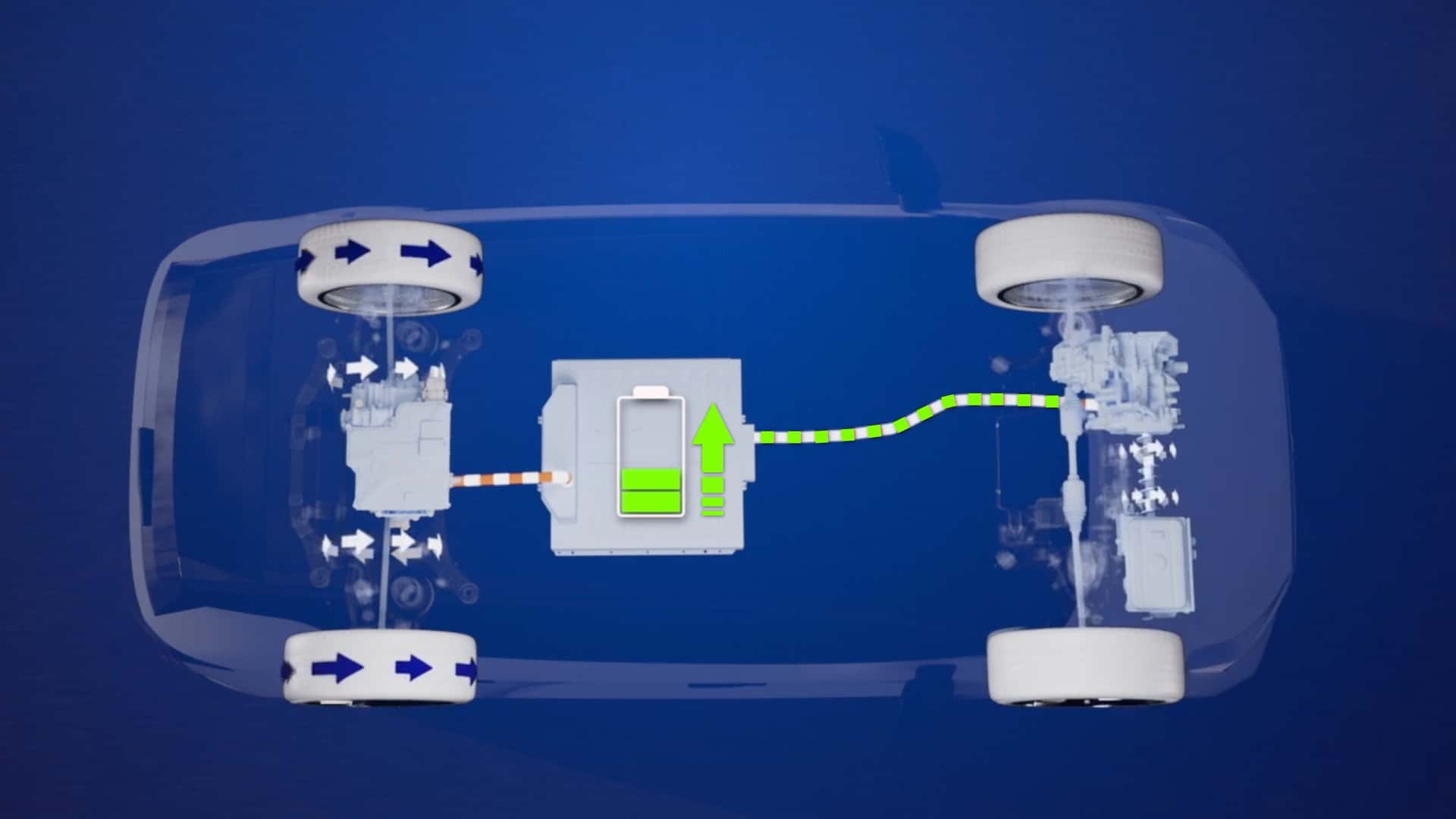
- ZF has developed an electric range extender that can also power a car's wheels.
- It still doesn't connect directly to an axle.
- The design essentially turns the range extender's power generator into another electric motor.
ZF, the German supplier that’s probably best known for its six- and eight-speed automatic transmissions, wants to upgrade the traditional generator that’s found in today’s extended-range electric vehicles.
As a rule of thumb, a plug-in hybrid (PHEV) and an extended-range EV (EREV) share many of the same characteristics. There’s a gas engine, a high-voltage battery and an electric motor. However, the main difference between these two is that in an EREV, the gas engine has no mechanical connection to the driven wheels. Instead, its only purpose is to turn an electric generator that feeds power into the battery to increase the driving range.
Now, ZF wants to add another layer to this layout by enabling the generator part of the system to also power a pair of wheels. Dubbed the Electric Range Extender Plus (eRE+), it’s part of a new line of range extenders that support both 400-volt and 800-volt power systems and integrate an inverter, a planetary gearset and the necessary software.
What makes ZF’s latest effort interesting is that the eRE+ also has a built-in clutch and differential, so it can be used either as a current generator or as an additional secondary drive, which saves time and money for the carmaker because it’s all integrated into one unit.
Mind you, the gas engine attached to the electric generator still doesn’t physically drive the wheels. Its sole purpose is to turn the generator, and it’s the generator—which is essentially an electric motor—that can send power to the wheels.
Set to go into production next year, the Electric Range Extender Plus can be configured to deliver between 70 and 150 kilowatts (94 to 201 horsepower), while the latest version of the more traditional Electric Range Extender (eRE) has an output between 70 and 110 kW (94 to 147 hp). The latter is more suited for use on the rear axle, while the Extender Plus is likely to be under the hood, just like in a combustion car. Together, they can provide over 300 hp, which is more than adequate.
Gallery: ZF Electric Range Extender (eRE) and Range Extender Plus (eRE+)




So why go to the trouble of developing such a system when automakers could just stuff run a plug-in hybrid powertrain? According to ZF, which also makes transmissions, going down the EREV route is usually cheaper, especially when a carmaker has invested considerable money into new electric vehicle platforms not designed for combustion powertrains.
"The new interest and the increased demand for range extenders show that the potential of this technology is far from exhausted, in particular for model platforms that are already designed for battery-electric drivelines," said Dr. Otmar Scharrer, senior vice president of R&D and electrified powertrain technology at ZF.
Using this tech, a car company could theoretically shove a small displacement engine under the hood and still make good use of a perfectly good EV platform. But ZF isn’t the only supplier exploring ways to adapt EV platforms. Renault and Geely’s Horse Powertrain spinoff recently showed off its idea of transforming EVs into hybrids.







